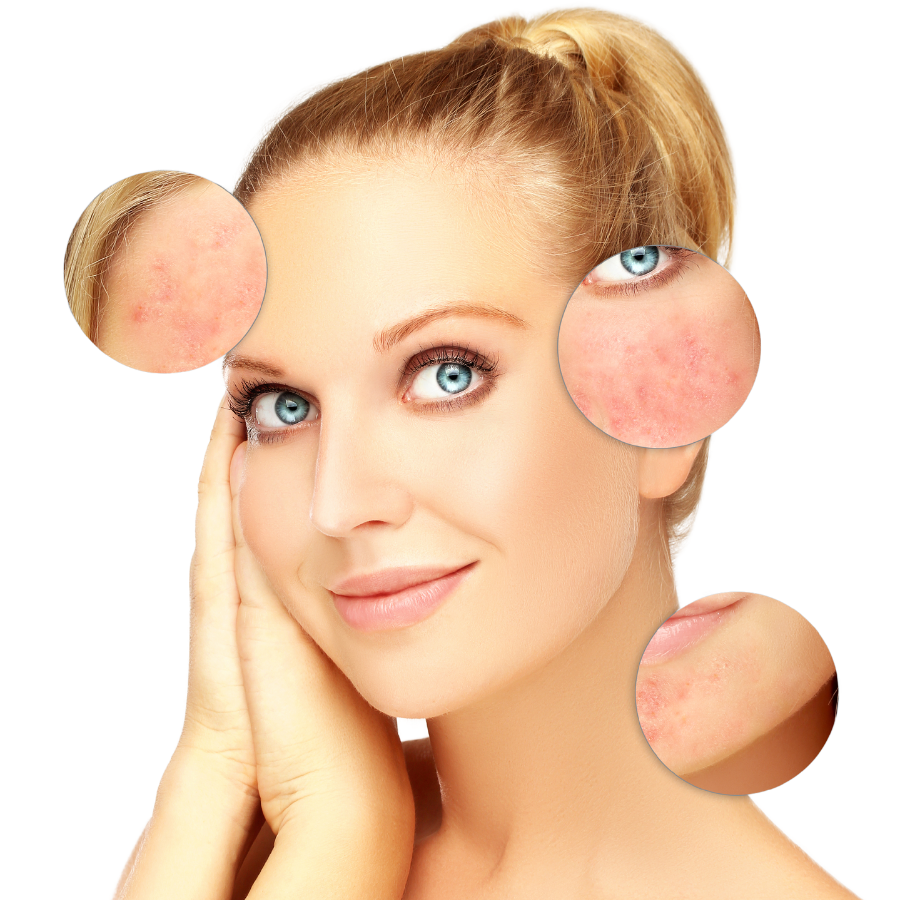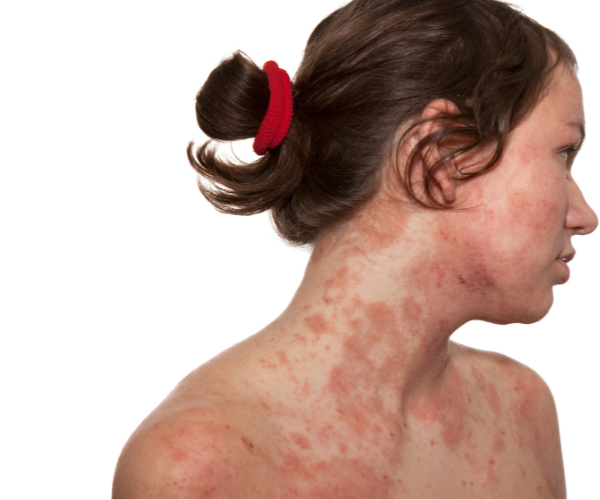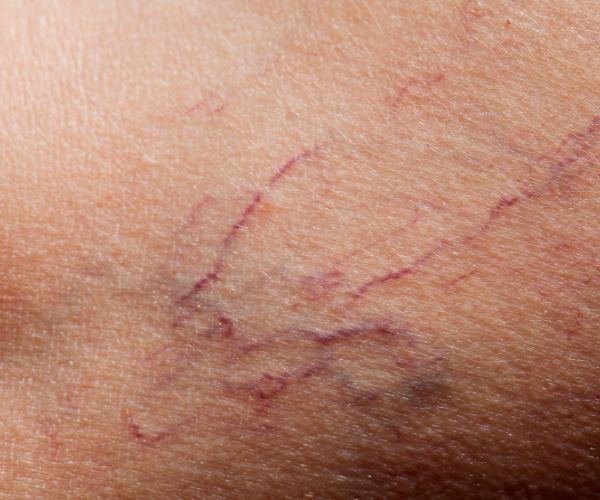Valley Dermatology
10 Reasons Your Face is Red
Noticing red patches on your face? Are you experiencing swelling? It could be an underlying skin condition. Below are 10 conditions that create redness in the face. If any of the symptoms below match your experience, our board-certified dermatologists can help you diagnose and treat you so that your skin can get back to normal.

#1: Rosacea
Do you notice that you get more flush than others? You may have rosacea. Rosacea is a common skin condition that starts in the nose and cheeks and can spread to the ears, chest, and back. There are different types of rosacea that can also cause visible blood vessels, acne, and swelling. The cause is unclear, however, genetics, the immune system, and a certain protein in the skin are suspected causes.

#2: Acne
Acne is one of the most common skin conditions in the United States. People of many ages experience acne, not just teens. A growing number of people have acne in their 30s, 40s, 50s, and beyond. Acne appears on the skin as a zit, commonly known as a pimple. A zit is caused by an interplay between bacteria, oil, hormones, and inflammation. The success of your acne treatment is as dependent on your involvement as it is on your doctor’s recommendations. Most of the treatment will be done in your home (applying topical treatments, cleansing your skin, taking oral medications, and more).
#3: Seborrheic Dermatitis
Seborrheic Dermatitis appears as red, dry, flaky, itchy skin on the scalp and other parts of the body and is common but not contagious. The condition is common and noncontagious. It appears on parts of the body that produce the most oil, including your face. The cause could be hormonal, due to skin lipids, an inflammatory reaction, genetics, or environmental factors like stress and weather. On the scalp, medicated shampoos and conditioners are used to treat it. Elsewhere on the body, topical antifungals, corticosteroids, and calcineurin inhibitors can be used.

#4: Eczema
Eczema, a type of dermatitis, is a common skin condition that affects 31 million Americans. There are a variety of causes, ranging from environmental factors to genetics. Some people have a gene variation that affects the skin’s ability to provide protection to itself. It is a reaction to skin irritants that causes dry, itchy, and inflamed skin. Most treatments for eczema are topical. Your dermatologist may prescribe you a steroid cream, however, many treatments are over the counter. Your doctor can recommend a moisturizer or antihistamine.
#5: Psoriasis
Psoriasis is a chronic autoimmune skin disease that speeds up the growth cycle of skin cells. Some people with psoriasis develop psoriatic arthritis. Symptoms of psoriasis can include patches of thick red skin and silvery scales. Treatments include creams and ointments applied to the affected areas and ultraviolet light therapy to drugs.
#6: Sunburn
When your skin has been exposed to UV radiation, your skin will become damaged and appear red. If this happens to you after a long day in the sun, it’s usually called a sunburn. There are two types of UV radiation: UVA and UVB, and both can damage your skin’s top layer. It doesn’t have to just be summer for this to happen. You can be exposed in the winter, or through artificial light. To prevent this, make sure to wear an SPF daily.
#7: Allergic Reaction
If you’re experiencing a red rash, itching, dry, cracked skin, bumps, and blisters, it could be an allergic reaction, or contact dermatitis, to an irritant. Common causes of allergic contact dermatitis include poison ivy, fragrances, and latex. Your dermatologist can help you determine the cause of the reaction so that you can avoid it going forward, and can treat your reaction.
#8: Lupus
Lupus is a rare autoimmune condition that affects virtually every organ, including the skin. This includes the skin on the face. Lupus can scar and discolor the skin, scaly rashes, and ring-life sores. These flare-ups can be triggered by many factors, mainly too much exposure to UV rays.
#9: Shingles
Shingles cause a painful, blistering rash on the skin. This condition occurs in people who have the varicella-zoster virus, or chickenpox. It occurs when the virus is re-activated and is more likely to happen to those with a weakened immune system. To avoid this, keep your immune system strong and stay up to date on vaccination. Make sure you see a dermatologist, like our board-certified doctors, if you have a shingles-related rash. Without treatment, a shingles rash on your face can permanently damage your eyesight.

#10: Spider Veins
Spider veins show up after long-term sun damage. They are usually red and look like tree branches or spider webs. They can be seen from under the skin, but do not make the skin bulge like varicose veins. A board-certified dermatologist may be able to get rid of the spider veins with laser treatment.
If you’re concerned about redness on your face, book an appointment with us.
